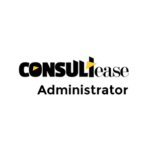Office Management Manual For Members In Practice: ICAI
Office Management Manual For Members In Practice
Chapter 1 Objective and Scope
1.1. Objective and Need for the Manual
- The Office of a Chartered Accountant provides professional services to its clients as also imparts training to future Chartered Accountants, i.e., Article/Audit students pursuing CA Course.
- As standardization is required for Accounts and Auditing which is normally followed by Chartered Accountants meticulously, it is equally important and relevant to have set Operating Standards for a Chartered Accountant’s Office.
- Though not mandatory, it is advisable to follow the guidelines suggested in this Manual for efficient operations and providing services befitting the Profession of Chartered Accountancy.
- Various aspects of Work Management, Client Relationship Management, Human Resource Management, and Technological management (both software and hardware) will provide a readymade guide to a Chartered Accountant in practice not only while setting up the practice but also while managing its day to day affairs as also for the development of practice.
- The Manual aims to assist practices in operating in a safe, profitable, and professional manner. The Manual seeks to do this by providing practical guidance across a select range of practice management topics.
- The Manual is intended to improve the management and operational efficiency of SMPs, ultimately making them more sustainable and successful. As such, the Manual is intended to: address the challenges faced by SMPs; improve the competitiveness, profitability, and sustainability of practices; enhance the expertise, competence, and efficiency of those managing practices; provide practical assistance to those engaged in managing practices so as to provide an environment conducive to the provision of high-quality services; showcase global best practices and latest practice management techniques.
Related Topic:
8 tips on how to grow your CA firm Practice
1.2. Scope of this Manual
- This Manual brings out various best practices that may be followed by various firms as the guidelines are a result of relevant research and pulling in of experience of various members which the Committee has been able to compile at one place for the benefit of membership at large, more particularly members from small and medium firms.
- Substantially all operating areas are covered:
Assignment Management – It covers how one deals with engagement right from initiation to completion within the scheduled time, such as billing and recovery.
Client Relationship Management deals with managing relationships with clients while maintaining professional independence as also complying with the regulations of ICAI in this regard.
Human Resources Management includes recruitment standards and processes to enable the quality of human resources and their training.
Technology Management highlights various tools required and available for delivering seamless professional services to the clients. It also enumerates various safeguards that are necessary for these days of digitization.
Related Topic:
8 tips on how to grow your CA firm Practice
1.3. Intended Users
This Manual is primarily directed at chartered accountants working for, or as SMPs. While the primary users are likely to be those managing the practice and senior professional staff, certain parts will be useful to more junior staff and as an introduction to the practices for new staff. It is also considered suitable as a reference.
It is suggested that this manual be stored in a particular folder where a new employee/article assistant should be asked to go through the same.
A firm can modify the same to suit their requirements.
Guide meant for everyday use: In addition, SMPs may find the Guide helpful when it comes to providing general business advice to SMEs, likewise, professional accountants working in SMEs may find it useful.
This is a maiden effort at providing best office practices at one place and will be reviewed and updated from time to time for the benefit of members at large.
Chapter 2 Client- Relationship Management
Strong and effective client relationships are the backbone of a successful accounting firm. The relationships accountants have with their clients is fundamental to the value of the accountancy firm. Increased competition demands that firms maintain and enhance client relationships. Increased regulation places more importance than ever on knowing your clients.
This chapter examines the development and ongoing maintenance of client relationships, and strategies to improve and cement your client relations.
Client Relationship Management (CRM) is one of the most important ingredients of a successful practice of Chartered Accountancy, be it a small firm, medium sized firm, or a large firm.
CRM should not be misconstrued as Customer Relationship Management. Colloquially, Customer Relationship Management means reaching out to customers, existing as well as potential, through mass communication means like bulk emails, SMS, etc.
One must take care to ensure that the CRM of the firm does not lead to Mass Marketing or advertising of the firm’s services as the ICAI Guidelines in this regard are quite stringent. Any violation of those guidelines may result in disciplinary action from the Institute.
CRM Policy needs to be designed such that the organizational structure of the CA firm, as well as that of the client, is taken care of. An organizational matrix is helpful in prioritizing interactions with appropriate levels of hierarchy in the clients’ organization. The layers in such a Matrix will vary according to the constitution & size of the CA firm.
An “A, B, C analysis” of the clients is desirable depending upon the size of the client, services required from the firm, the scale of fees generated or expected to be generated from the client, social/professional/political and/or business-wise standing of the client (potential in generating references for future assignment), etc.
Various aspects of Client- Relationship Management may be as follows :
2.1 Pre – Relationship stage
The acquisition of a new client is a critical aspect in terms of commercial and professional development. Traditionally, new clients are developed from out of referrals given by existing clients. This is the organic mode in which growth of practice is gradual & slow. Rapid scaling up of practice needs inorganic methods so as to actively reach out to potential clients.
Soliciting Professional work:
Our profession is heavily regulated as far as a solicitation of work is concerned. The “Code of Conduct and Professional Ethics” issued by the ICAI strictly prohibits certain acts –acts that must be avoided. There are guidelines as regards advertisements, maintenance of name board, flaunting of professional achievements, maintenance of the website, etc. One needs to keep in mind the Code of Conduct and Professional Ethics while trying to develop one’s professional practice.
For generating new clients and retaining existing clients, one may give lectures on professional topics, may write articles on current topics of importance, share the profile of the firm when asked for, etc. The profile of the firm may include details of professional achievements of the firm, awards and appreciations received, important assignments handled, etc.
- The solicitation process may include a personal presentation about the firm before a prospective client and/or sharing of the firm’s profile through mail or physically (printed copy). Considering the huge competition, one needs to put in the best efforts in this regard.
- Before making any presentation, one needs to understand the expectations of the potential client. The focus should always be on addressing those expectations and presenting as to how the firm is most eligible to meet those expectations.
- Information about the Firm’s core strengths & capabilities should get conveyed in a precise manner. This should help a firm in getting an easy audience in the future if a relevant engagement opportunity arises, even if the firm loses out to competition in the engagement currently being tried.
- One must keep in mind the regulations of ICAI in this regard, Council Guidelines in respect of Advertisement by Members in Practice.
Read & Download full copy in pdf:
If you already have a premium membership, Sign In.
 ConsultEase Administrator
ConsultEase Administrator
Consultant
Faridabad, India
As a Consultease Administrator, I'm responsible for the smooth administration of our portal. Reach out to me in case you need help.













